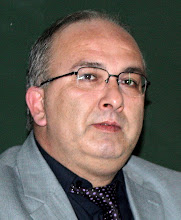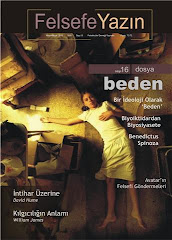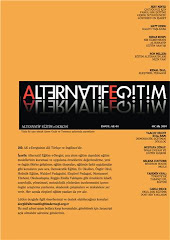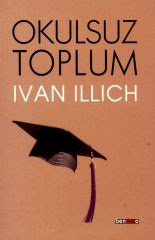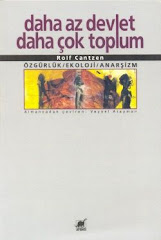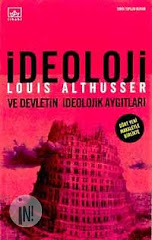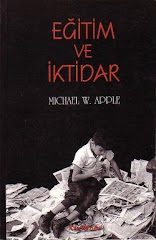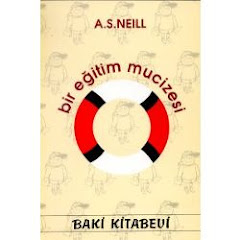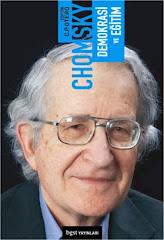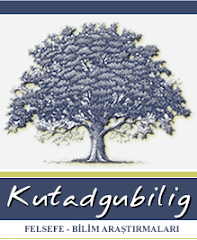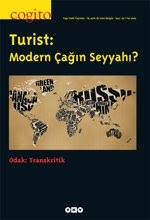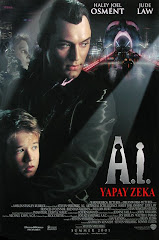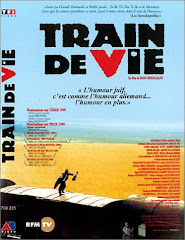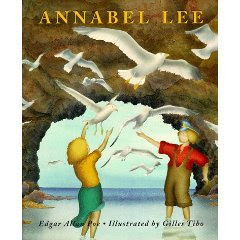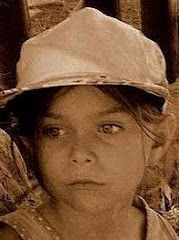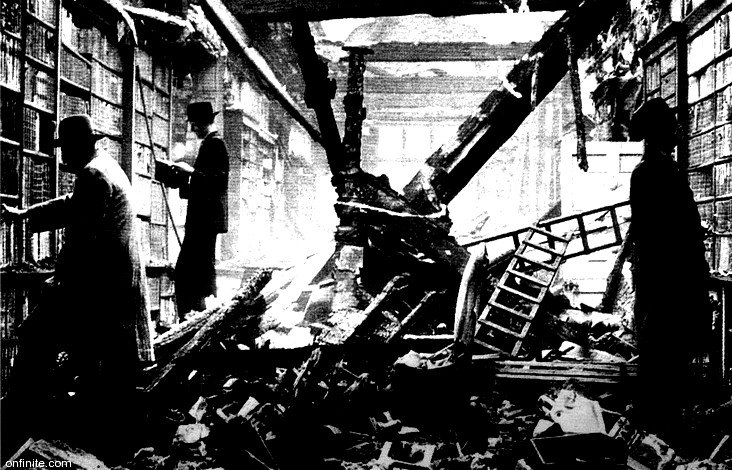
Prof.Ass. Sevinç PEKER
Prof.Ass. Banu SAYINER
Prof.Ass. Yusuf İNANDI
Prof.Ass. Yusuf İNANDI
Dr. Bülent AKDAĞ
Abstract: In this paper, the problem solving ability of teachers and administrators have been studied by using a demographic information form and “Problem Solving Inventory Form-A” which was developed by Heppner and Peterson. The interactions between the variables of demography form and the dimensions of problem solving were searched in the frame of sex, age, experience, status, branch, last graduated school, educational and formational background, in-service training, marital status and school type questions. The results showed some significant relations among the variables.
INTRODUCTION
The main purpose of this study is to examine the elementary school teachers and administrators level of problem solving techniques according to certain variables.
The ability to solve problems might be regarded as the pinnacle of human ability. The occurence of a problem may reflect failures in an even more impressive cognitive system which is able to cope with understanding out environment and planning our response to it without the obvious hold-ups that problems, by definition, represent (Hampson and Morris, 1996).
Human beings are problem solvers who think and act within a grand complex of fuzzy and shifting goals and changing means to attain them. The pace of societal change shows no signs of slachening, citizens of the 21st century must become adept problem solvers able to wrestle with ill-defined problems and win. Problem-solving ability is the cognitive passport to the future (Martinez, 1998).
Every educator is familiar with the term “problem solving”, and most would agree that the ability to solve problems is a worthy goal of education (Dahlgaard and Larsen, 1997).
John Dewey describes the problem as anything that confuses and challenges human minds and believes. Therefore, according to him solving problem means eliminating uncertanity. Problem could be a small one, concerning a decision about our daily life or as important as about future of our education system. Here of course we are going to dissccus the problem solving abilities in the field of education and its variables.
According to Morgan (1993) problem is a conflict which hinders an indivudual from achiving his or her goals. In such circumstances problem is to find the best way to overcome the obstacle. Since the problems faced are varied, so the problem solving techniques are.
One technique we can mention is called: IDEAL. Bootzin (1991) and J.Bransford and B.Stein formulised the problem solving stages in 5 steps.
I- Identify: Determining the existence of the problem and its concerns.
D- Define: Defining the problem
E- Explore: Exploring the possible solutions and strategies
A- Act: Acting on the chosen solutions and strategies.
L-Look: Looking back to problem and evaluating the outcome.
In educational organizations, sometimes the hierararcy doesn't allow individuals to solve the problems although they are capable enough. Therefore, many administrative problems are usually left unsolved. The attitude of the administrator, problem solving capability of the organization, style of supervision, communication, positive perception of criticism and research done play a very important role in the problem solving process (Baþaran, 1996).
Goffin (1985) provides teachers with guiding questions that will help them identify appropriate problems. Some of these are:
1. Is the problem meaningful and interesting?
2. Can the problem be solved at a variety of levels?
3. Must a new decision be made?
4. Can the actions be evaluated? (Britz, 1993).
Throughtout their lives people face many different problems and use many different strategies to solve them. It is not only the character of the problem that determines the way to be used to solve it. The age, sex, experience and educational background individual also have an effect on his or her choice of solution. Among these , using scientific methods in problem solving means using high skill of thinking. In brief, problem solving involves logical thinking and equips individuals with skills to overcome difficulties.
METHOD
In this descriptive research teachers' and administrators' opinions are asked. In this study, “Problem Solving Inventory Form-A” which was developed by Hepper and Petersen (1982). In this research, there are the opinions of the teachers and administrators in public and private schools in Istanbul. In the sample there were a total of 386 people who were 344 teachers and 42 administrators that were chosen at random. Related to this, in the data obtained there are these criteria; the general opinions of teachers and administrators; and t-test was applied to find out if there was a meaningful difference between the thoughts of teachers and administrators about sex, status, in-service training, marital status and school type. One-Way ANOVA was applied to test age, experience, branch, last graduated school, educational and formational background. As a result of this test if there is a meaningful difference, to search for the reasons of the difference Tukey B test is applied. The interpretations are made according to these results.
RESULTS
TABLE 1
THE DISTRIBUTION OF PROBLEM SOLVING SKILLS FOR DIMENSIONS

TABLE 2
THE DISTRIBUTION OF PROBLEM SOLVING SKILLS FOR SEX

P<0,05>
TABLE 3
THE DISTRIBUTION OF PROBLEM SOLVING SKILLS FOR AGE

TABLE 4
THE DISTRIBUTION OF PROBLEM SOLVING SKILLS FOR EXPERIENCE

TABLE 5
THE DISTRIBUTION OF PROBLEM SOLVING FOR STATUS

TABLE 6
THE DISTRIBUTION OF PROBLEM SOLVING SKILLS FOR BRANCH

TABLE 7
THE DISTRIBUTION OF PROBLEM SOLVING SKILLS FOR LAST GRADUATED SCHOOL

TABLE 8
THE DISTRIBUTION OF PROBLEM SOLVING SKILLS FOR EDUCATIONAL AND FORMATIONAL BACKGROUND

TABLE 9
THE DISTRIBUTION OF PROBLEM SOLVING SKILLS FOR IN-SERVICE TRANING

TABLE 10
THE DISTRIBUTION OF PROBLEM SOLVING SKILLS FOR MARITAL STATUS

TABLE 11
THE DISTRIBUTION OF PROBLEM SOLVING SKILLS FOR SCHOOL TYPE

DISCUSSION
According to Table 1
Ranking of problem solving skills;
1. Impetuous approach
2. Evaluative approach
3. Avoidance approach
4. Self-confidence approach
5. Thinking approach
6. Planned approach
According to Table 2
For sex variable, significant differences were obtained in the subscale of evaluative approach. The significance between groups is explained by female subjects.
According to Table 3
For age variable, significant differences were obtained in the subscales of impetuous approach and avoidence approach. The significance between groups is explained by 51+ ages (the oldest group) subjects.
According to Table 4
For experience variable, significant differences were obtained in the subscales of thinking approach and planned approach. The significance between groups is explained by 26+ years subjects.
According to Table 5
For status variable, significant differences were obtained in the subscale of thinking approach and planned approach. The significance between groups is explained by administrator subjects.
According to Table 6
For branch variable, significant differences were obtained in the subscales of thinking approach and self-confidence approach. The significance between groups is explained by social science subjects.
According to Table 7
For last graduated school variable, significant differences were obtained in the subscale of planned approach. The significance between groups is explained by subjects who were graduaded from Faculty of Education .
According to Table 8
For educational and formational backgraund variable, there were not found significant differences between the groups according to subscales.
According to Table 9
For in-service training variable, significant differences were obtained in the subscales of impetuous approach, avoidence approach and self-confidence approach. The significance between groups is explained by subjects who were continued in-service training programme.
According to Table 10
For marital status variable, significant differences were obtained in the subscales of thinking approach, evaluative approach and planned approach. The significance between groups is explained by married subjects.
According to Table 11
For school type variable, significant differences were obtained in the subscales of impetuous approach and avoidence approach. The significance between groups is explained by private school subjects.
REFERENCES
Basaran, I.E.(1996). Educational administration. Ankara.
Bootzin, R., Bransford, J., and Stein, B. (1991). Psychology Today an Introduction.
Britz, J. (1993). Problem solving in early childhood classroom. ERIC Digest.
Dahlgaard, J. and Larsen, H.Z. (1997). Leadership profiless in quality management: A Danish perspective. Total Quality Management. Volume:8, No:2/3.
Dewey, J. (1996). Democracay and education. Istanbul: Basari Press.
Goffin,S., and Tull, C. (1985). Problem Solving Encouraging Active Learning. Young Children. ERIC Digest.
Hampson, P.J. and Morris, P.E. (1996). Understaning cognition. Oxford: Blackwell Publishers Ltd.
Heppner, P. And Petersen P. (1982). The development and implicationas of a personal problem-solving inventory. Journal of Counseling Psychology. Volum29, No:1.
Martinez, M.E. (1998). What is problem solving? Phi Delta Kappan. April, Volume: 79, No: 8.
Morgan, C.T. (1991). Introduction to Psychology.
Abstract: In this paper, the problem solving ability of teachers and administrators have been studied by using a demographic information form and “Problem Solving Inventory Form-A” which was developed by Heppner and Peterson. The interactions between the variables of demography form and the dimensions of problem solving were searched in the frame of sex, age, experience, status, branch, last graduated school, educational and formational background, in-service training, marital status and school type questions. The results showed some significant relations among the variables.
INTRODUCTION
The main purpose of this study is to examine the elementary school teachers and administrators level of problem solving techniques according to certain variables.
The ability to solve problems might be regarded as the pinnacle of human ability. The occurence of a problem may reflect failures in an even more impressive cognitive system which is able to cope with understanding out environment and planning our response to it without the obvious hold-ups that problems, by definition, represent (Hampson and Morris, 1996).
Human beings are problem solvers who think and act within a grand complex of fuzzy and shifting goals and changing means to attain them. The pace of societal change shows no signs of slachening, citizens of the 21st century must become adept problem solvers able to wrestle with ill-defined problems and win. Problem-solving ability is the cognitive passport to the future (Martinez, 1998).
Every educator is familiar with the term “problem solving”, and most would agree that the ability to solve problems is a worthy goal of education (Dahlgaard and Larsen, 1997).
John Dewey describes the problem as anything that confuses and challenges human minds and believes. Therefore, according to him solving problem means eliminating uncertanity. Problem could be a small one, concerning a decision about our daily life or as important as about future of our education system. Here of course we are going to dissccus the problem solving abilities in the field of education and its variables.
According to Morgan (1993) problem is a conflict which hinders an indivudual from achiving his or her goals. In such circumstances problem is to find the best way to overcome the obstacle. Since the problems faced are varied, so the problem solving techniques are.
One technique we can mention is called: IDEAL. Bootzin (1991) and J.Bransford and B.Stein formulised the problem solving stages in 5 steps.
I- Identify: Determining the existence of the problem and its concerns.
D- Define: Defining the problem
E- Explore: Exploring the possible solutions and strategies
A- Act: Acting on the chosen solutions and strategies.
L-Look: Looking back to problem and evaluating the outcome.
In educational organizations, sometimes the hierararcy doesn't allow individuals to solve the problems although they are capable enough. Therefore, many administrative problems are usually left unsolved. The attitude of the administrator, problem solving capability of the organization, style of supervision, communication, positive perception of criticism and research done play a very important role in the problem solving process (Baþaran, 1996).
Goffin (1985) provides teachers with guiding questions that will help them identify appropriate problems. Some of these are:
1. Is the problem meaningful and interesting?
2. Can the problem be solved at a variety of levels?
3. Must a new decision be made?
4. Can the actions be evaluated? (Britz, 1993).
Throughtout their lives people face many different problems and use many different strategies to solve them. It is not only the character of the problem that determines the way to be used to solve it. The age, sex, experience and educational background individual also have an effect on his or her choice of solution. Among these , using scientific methods in problem solving means using high skill of thinking. In brief, problem solving involves logical thinking and equips individuals with skills to overcome difficulties.
METHOD
In this descriptive research teachers' and administrators' opinions are asked. In this study, “Problem Solving Inventory Form-A” which was developed by Hepper and Petersen (1982). In this research, there are the opinions of the teachers and administrators in public and private schools in Istanbul. In the sample there were a total of 386 people who were 344 teachers and 42 administrators that were chosen at random. Related to this, in the data obtained there are these criteria; the general opinions of teachers and administrators; and t-test was applied to find out if there was a meaningful difference between the thoughts of teachers and administrators about sex, status, in-service training, marital status and school type. One-Way ANOVA was applied to test age, experience, branch, last graduated school, educational and formational background. As a result of this test if there is a meaningful difference, to search for the reasons of the difference Tukey B test is applied. The interpretations are made according to these results.
RESULTS
TABLE 1
THE DISTRIBUTION OF PROBLEM SOLVING SKILLS FOR DIMENSIONS

TABLE 2
THE DISTRIBUTION OF PROBLEM SOLVING SKILLS FOR SEX

P<0,05>
TABLE 3
THE DISTRIBUTION OF PROBLEM SOLVING SKILLS FOR AGE

TABLE 4
THE DISTRIBUTION OF PROBLEM SOLVING SKILLS FOR EXPERIENCE

TABLE 5
THE DISTRIBUTION OF PROBLEM SOLVING FOR STATUS

TABLE 6
THE DISTRIBUTION OF PROBLEM SOLVING SKILLS FOR BRANCH

TABLE 7
THE DISTRIBUTION OF PROBLEM SOLVING SKILLS FOR LAST GRADUATED SCHOOL

TABLE 8
THE DISTRIBUTION OF PROBLEM SOLVING SKILLS FOR EDUCATIONAL AND FORMATIONAL BACKGROUND

TABLE 9
THE DISTRIBUTION OF PROBLEM SOLVING SKILLS FOR IN-SERVICE TRANING

TABLE 10
THE DISTRIBUTION OF PROBLEM SOLVING SKILLS FOR MARITAL STATUS

TABLE 11
THE DISTRIBUTION OF PROBLEM SOLVING SKILLS FOR SCHOOL TYPE

DISCUSSION
According to Table 1
Ranking of problem solving skills;
1. Impetuous approach
2. Evaluative approach
3. Avoidance approach
4. Self-confidence approach
5. Thinking approach
6. Planned approach
According to Table 2
For sex variable, significant differences were obtained in the subscale of evaluative approach. The significance between groups is explained by female subjects.
According to Table 3
For age variable, significant differences were obtained in the subscales of impetuous approach and avoidence approach. The significance between groups is explained by 51+ ages (the oldest group) subjects.
According to Table 4
For experience variable, significant differences were obtained in the subscales of thinking approach and planned approach. The significance between groups is explained by 26+ years subjects.
According to Table 5
For status variable, significant differences were obtained in the subscale of thinking approach and planned approach. The significance between groups is explained by administrator subjects.
According to Table 6
For branch variable, significant differences were obtained in the subscales of thinking approach and self-confidence approach. The significance between groups is explained by social science subjects.
According to Table 7
For last graduated school variable, significant differences were obtained in the subscale of planned approach. The significance between groups is explained by subjects who were graduaded from Faculty of Education .
According to Table 8
For educational and formational backgraund variable, there were not found significant differences between the groups according to subscales.
According to Table 9
For in-service training variable, significant differences were obtained in the subscales of impetuous approach, avoidence approach and self-confidence approach. The significance between groups is explained by subjects who were continued in-service training programme.
According to Table 10
For marital status variable, significant differences were obtained in the subscales of thinking approach, evaluative approach and planned approach. The significance between groups is explained by married subjects.
According to Table 11
For school type variable, significant differences were obtained in the subscales of impetuous approach and avoidence approach. The significance between groups is explained by private school subjects.
REFERENCES
Basaran, I.E.(1996). Educational administration. Ankara.
Bootzin, R., Bransford, J., and Stein, B. (1991). Psychology Today an Introduction.
Britz, J. (1993). Problem solving in early childhood classroom. ERIC Digest.
Dahlgaard, J. and Larsen, H.Z. (1997). Leadership profiless in quality management: A Danish perspective. Total Quality Management. Volume:8, No:2/3.
Dewey, J. (1996). Democracay and education. Istanbul: Basari Press.
Goffin,S., and Tull, C. (1985). Problem Solving Encouraging Active Learning. Young Children. ERIC Digest.
Hampson, P.J. and Morris, P.E. (1996). Understaning cognition. Oxford: Blackwell Publishers Ltd.
Heppner, P. And Petersen P. (1982). The development and implicationas of a personal problem-solving inventory. Journal of Counseling Psychology. Volum29, No:1.
Martinez, M.E. (1998). What is problem solving? Phi Delta Kappan. April, Volume: 79, No: 8.
Morgan, C.T. (1991). Introduction to Psychology.
***
Referans: Peker, Sevinç / Sayıner, Banu / İnandı, Yusuf /Akdağ, Bülent. (2001). “The Problem Solving Ability of Teachers and Administrators”, XXXI. Annual Congress Of European Association for Behavioural and Cognitive Therapies (EABCT), 11-15 September 2001, İstanbul: Paper Presented.


